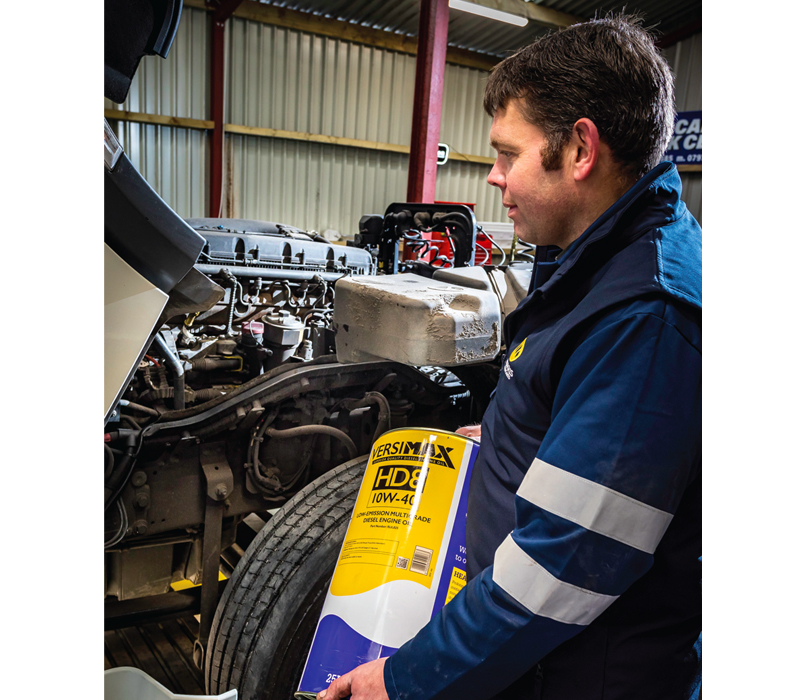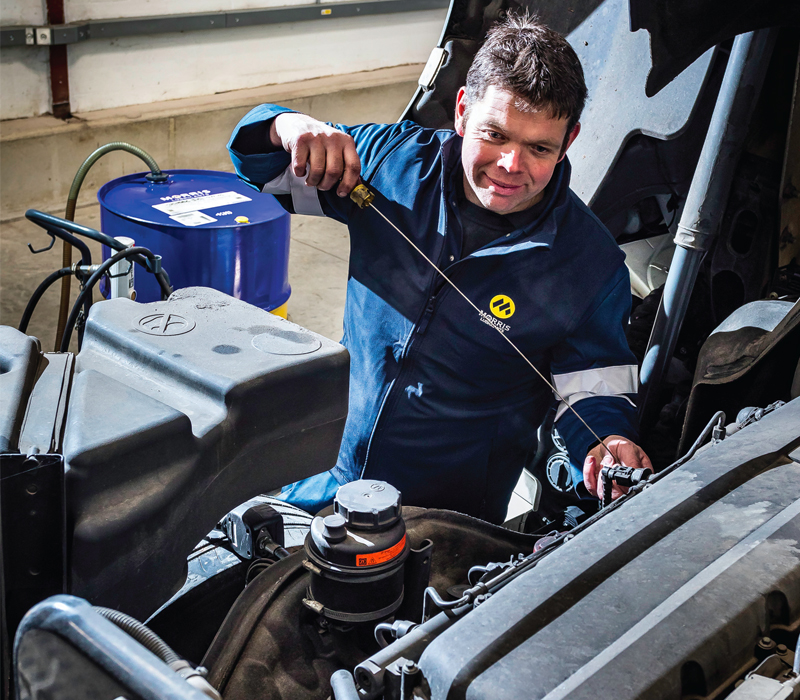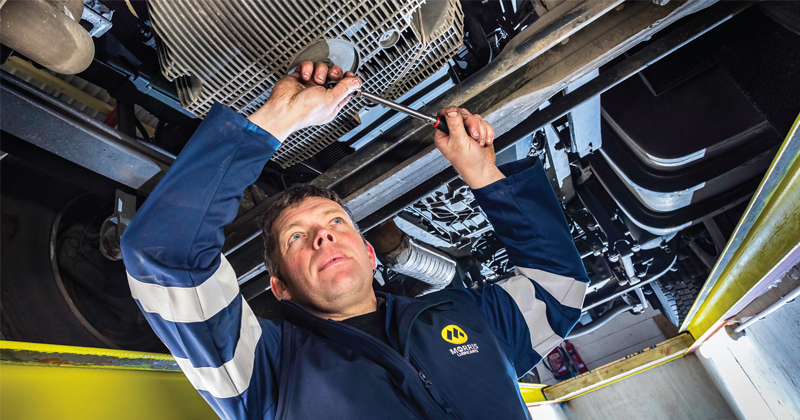
Adrian Hill, technology manager at Morris Lubricants outlines just how critical the role of engine lubricants is in the fight to keep emissions down but engine performance up.
In the world of road transport, the path to reduced emissions is a challenging one, but new technologies and the latest innovations continue to deliver significant improvements. However, there are many pieces to this ‘emissions’ jigsaw and each must be in place, for the true benefits to be realised.
Since the 1990s, continued legislation has driven vehicle emissions down and down, but to achieve this, engine and exhaust system modifications have had to be made. A variety of emission reduction technologies have been introduced to control the levels of NOx gases and particulate matter (harmful solid debris in the exhaust gas stream). The use and continued effectiveness of these systems have always depended strongly on the quality and performance of the lubricants used.

NOx gases can be controlled using Exhaust Gas Recirculation (EGR) and selective catalytic reduction systems (AdBlue). EGR creates a severe engine environment, with spent exhaust gases being directed back into the intake manifold. This reduces the amount of free oxygen available to convert free nitrogen in the air to NOx compounds. However, the side effect is incomplete combustion, which creates a large amount of abrasive soot.
Soot is not only abrasive, but also affects the flow properties of the oil. Without the correct level of lubricant performance, the engine will experience accelerated wear and oil thickening, which could lead to catastrophic failure. Correctly formulated engine oils control wear and thickening due to soot and will allow the engine to run at optimum efficiency, helping to reduce emissions.
Catalyst for change
The SCR (AdBlue) systems rely on the effectiveness of a catalyst fitted to the exhaust system. AdBlue, a solution of urea, is sprayed into the exhaust gas stream and is carried into the catalyst, where a chemical reaction takes place to remove NOx gases by creating nitrogen and water vapour. However, when the engine oil lubricates the compression rings, valve stems and valve guides, a small amount of lubricant is burnt, releasing sulphur and phosphorous from certain compounds.
As the engine runs, these elements find their way into the catalyst and poison the active sites where the reaction takes place, making the catalyst unusable. Engine oils must be formulated correctly to ensure the additive chemistry provides suitable levels of wear protection without affecting the catalyst. A poorly functioning catalyst will not only be unable to control emission levels, but engine management systems may put the vehicle into reduced power mode (or limp mode) until the situation has been remedied.

Diesel Particulate Filters (DPFs) are installed in the exhaust system to catch particulate matter (soot) and to prevent it from entering the atmosphere where it can cause health and environmental issues. Sensors monitor the working pressure across the unit and when it drops to a defined value, a regeneration cycle is initiated. This usually involves unburnt fuel entering the unit, causing a temperature spike that oxidises the soot (solid) to carbon dioxide (gas). Carbon dioxide flows out and the unit is good to go again.
As mentioned previously, a small amount of lubricant is burnt during this process, and this creates a metallic ash that is swept into the DPF. However, the metallic ash that is generated remains behind and eventually the DPF will be unable to reach normal pressure ranges. Again, the vehicle will click into reduced power mode.
Using the correct engine oil with the correct formulation will protect the engine components, and also ensure that the DPF has the best possible service life. When the DPF is working at its optimum levels then particulate emissions are controlled more effectively.
To reduce emissions even further, efforts have been focused on improvements in fuel efficiency. New engine hardware architectures, designs and technologies are emerging that embrace multiple innovations.
There’s no doubt that engine downsizing, in terms of the number of cylinders employed, will continue. Eight-cylinder engines, with the odd exception (such as Scania), have already been moved down to six cylinders in numerous cases and with the adoption of variable geometry turbochargers, to give tailored boost depending on demand, power outputs have been maintained.
Variable valve timing helps to ensure maximum fuel efficiency under a wide range of loads and operating conditions. Different construction materials are starting to come into play. For example, steel pistons are being used to cope with higher peak cylinder pressures and allowing the top compression ring to be moved closer to the crown, reducing the crevice volume where burn inefficiencies can occur.

Fuel for thought
On top of these modifications, the aftertreatment devices are continuing to improve in design and effectiveness. Two stage AdBlue injection aims to improve NOx conversion, relying on a tailored engine oil formulation to ensure catalyst longevity. DPFs are removing even smaller particles and will remain effective longer by using the correct type of low ash engine oil.
Another strategy to reduce emissions is to improve fuel efficiency. If less fuel is used, then emissions are also reduced. Improvements in fuel efficiency can be made by using engine oils that produce thinner oil films in the bearings and where the compression ring travels along the cylinder liner area. These thinner oil films result in less drag and therefore offer more useable energy that can be used by the wheels.
To ensure that component integrity is not compromised, these thinner engine oil films are fortified with polymer chemistry to ensure there is no metal-to-metal contact. Polymers are essential when formulating 5W-30, 5W-20 and 0W-20 engine oils for the commercial vehicle sector. The modern heavy-duty diesel engine is complex and is still evolving. These new architectures, technologies and fuelling strategies produce real world emission reductions, but they will only achieve this if they are fitted with new generation engine oils, which are as critical as any other component.









